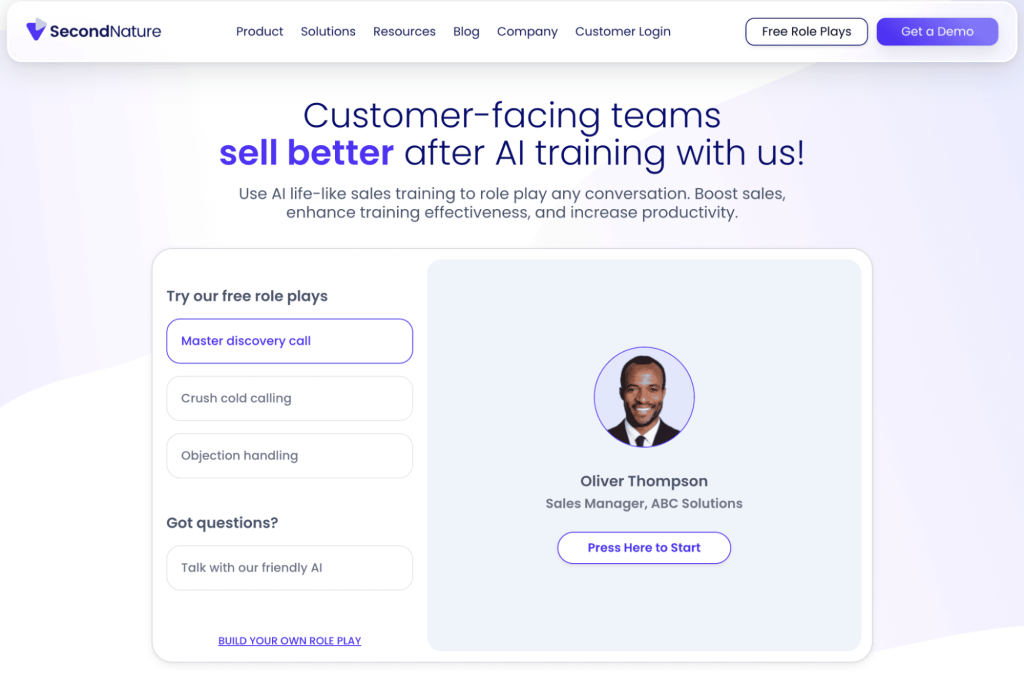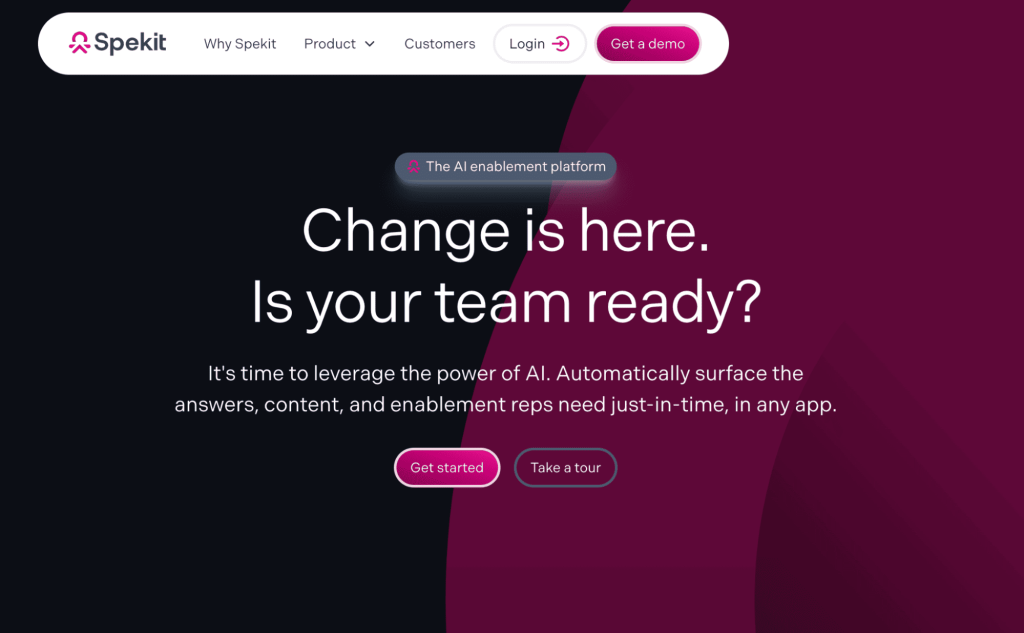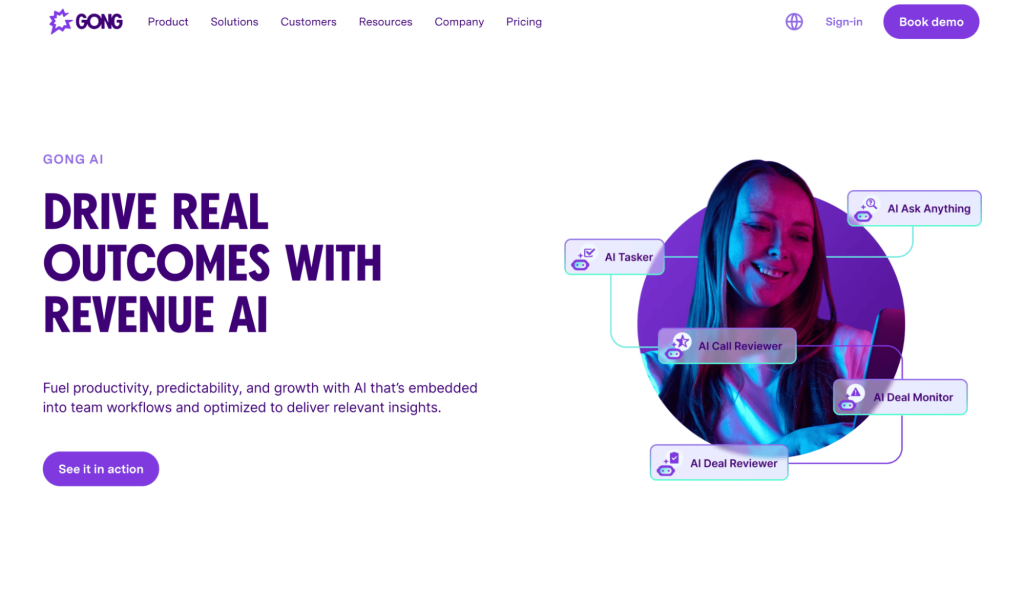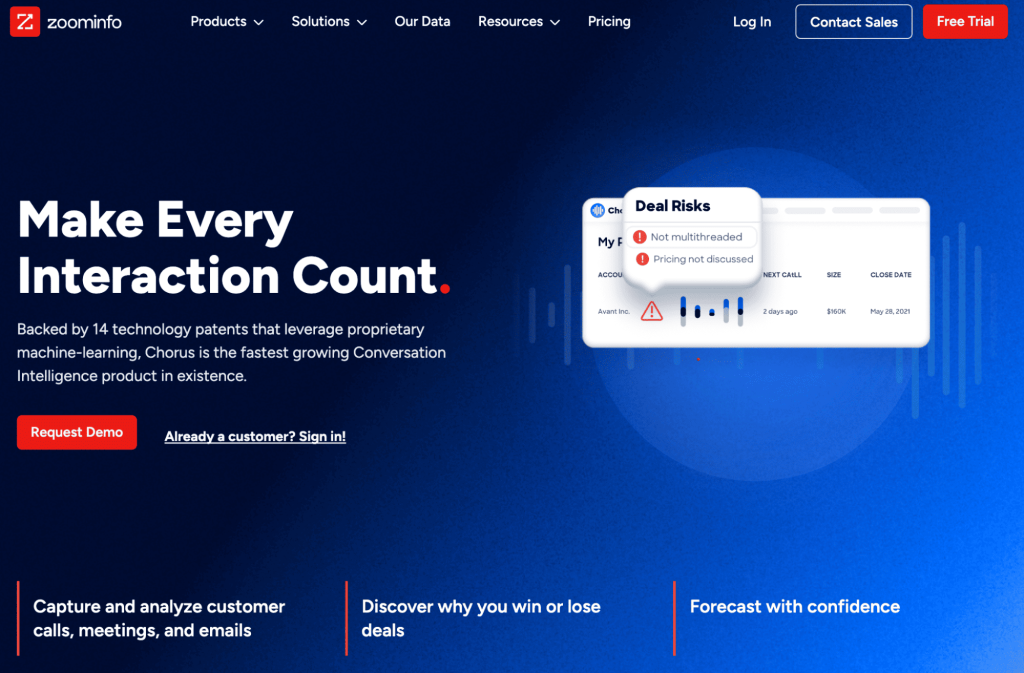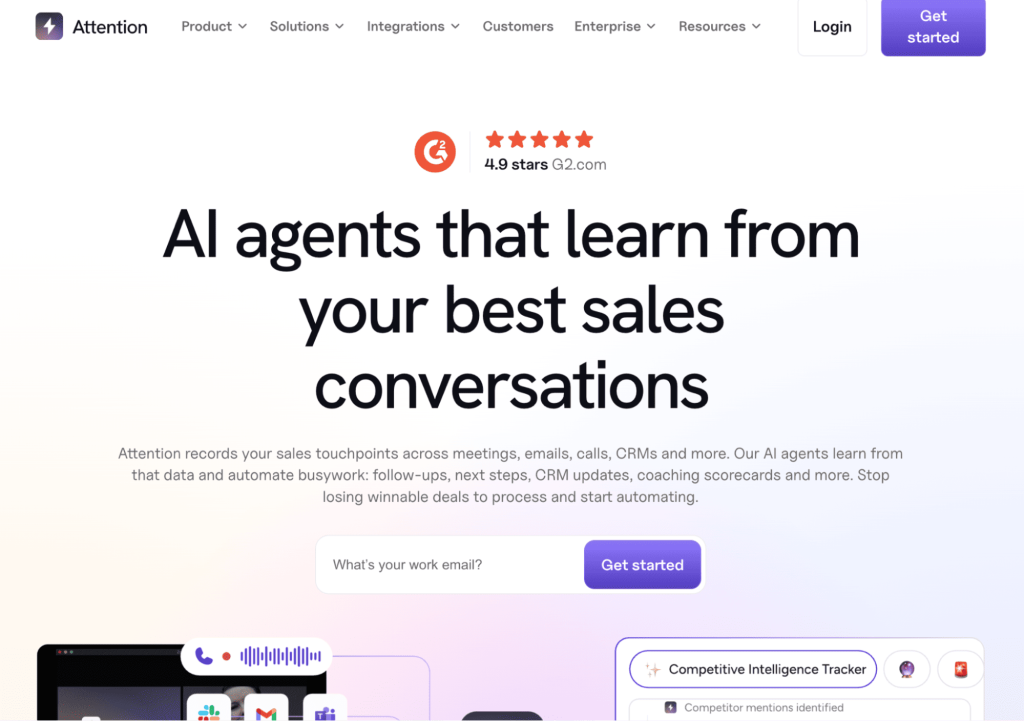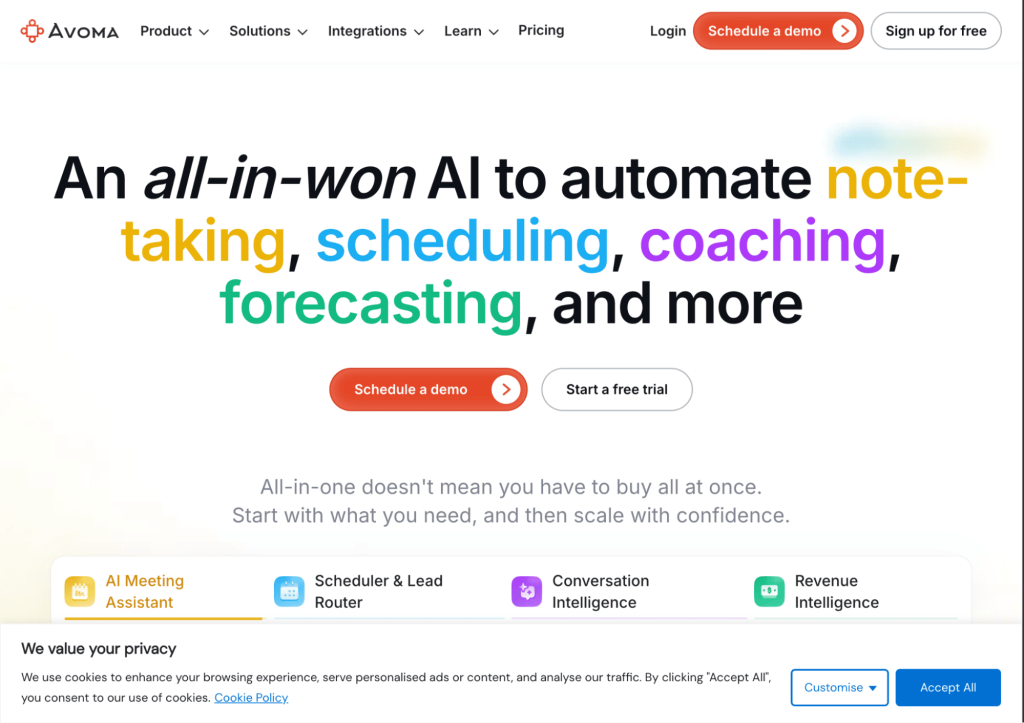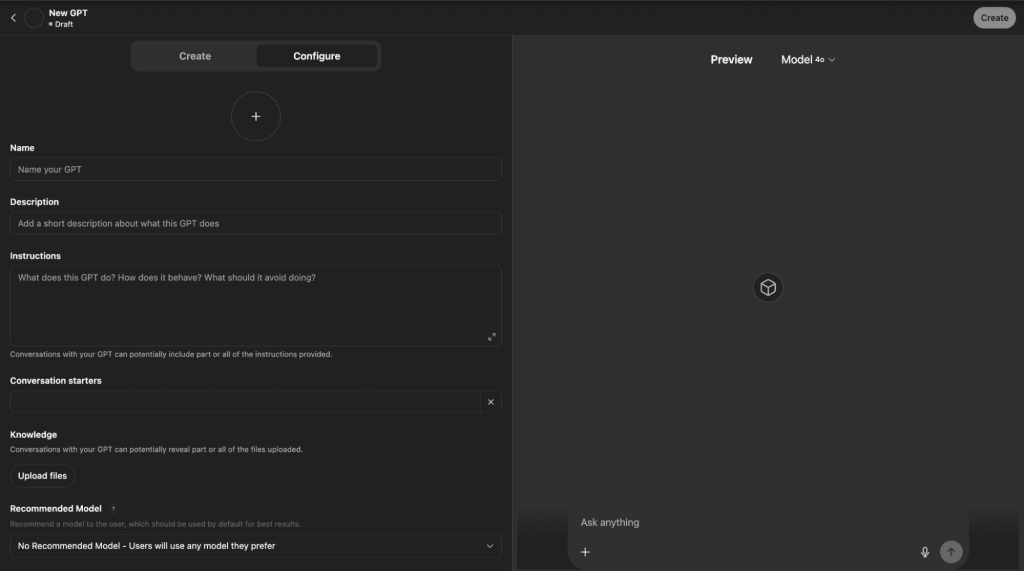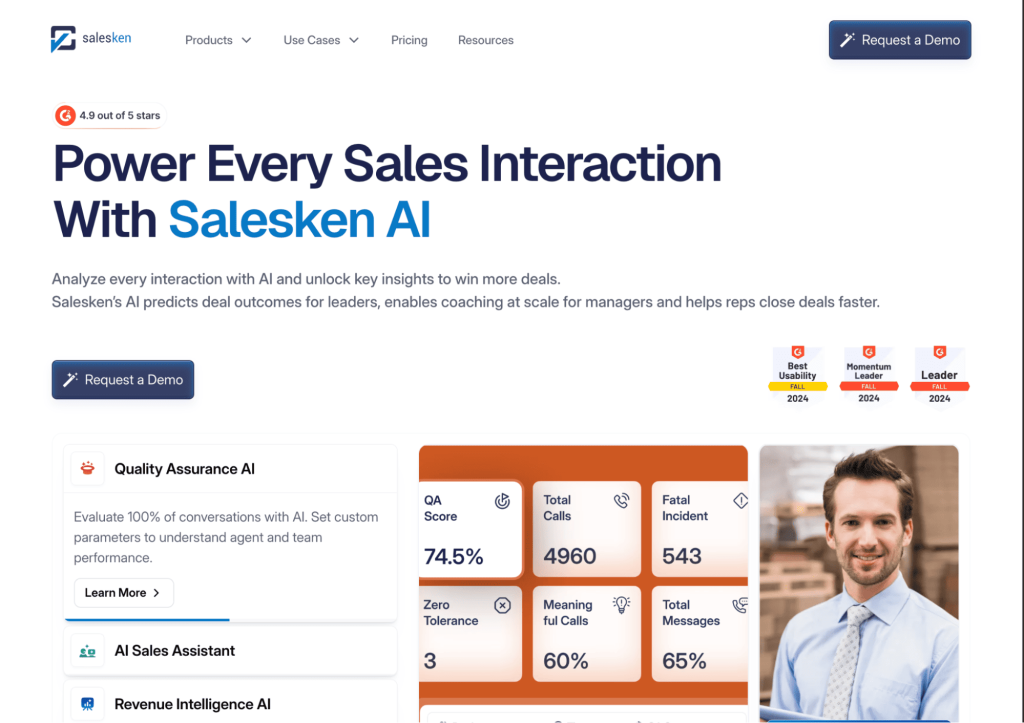You finally get a prospect on the phone, and they hit you with, “We already have a vendor” or “This is beyond our budget.”
Or the classic silence after what felt like a great demo.
You know you could’ve handled it better, but when’s the last time you actually practiced that moment?
That’s the gap AI sales role play is here to fill. It lets you run realistic, unscripted conversations with virtual buyers who push back, go cold, or throw curveballs.
In this article, we’ll break down what AI sales role play really is, why it’s showing up in more tech stacks, which tools are worth your time, and how to use them to close the skill gaps that real calls keep exposing.
What is AI sales role play?
AI sales role play refers to using artificial intelligence to simulate real-life sales conversations.
Sales reps can use this method to practice and improve their skills in a safe, low-stakes environment.
Think of it as a virtual sales coach that plays the role of a prospect or customer. It responds dynamically to your pitch, asks tough questions, handles objections, and scores your responses.
Here’s how it works:
- Set up a scenario: You pick or customize a sales scenario (e.g., cold call with a hesitant prospect, demo with a decision-maker)
- AI plays the buyer: The AI responds like a human would. Sometimes positively, sometimes pushing back, based on your tone, keywords, and strategy
- Get real-time feedback: Many tools offer instant coaching on things like filler words, confidence, objection handling, and pitch clarity
- Track progress: You get analytics on how you improve over time, what skills you need to work on, and where you lose momentum
What should you look for in an AI role-play tool?
Not all AI role-play tools are created equal. Here’s what to look for so you don’t waste time on clunky software that doesn’t actually help you improve.
1. Realistic buyer simulations
The AI should respond like a real prospect—raise objections, ask follow-ups, and adapt based on what the rep says. Avoid tools with canned scripts.
2. Customizable scenarios
You should be able to create role plays that match your actual sales motion, such as cold calls, discovery, pricing objections, and competitor comparisons.
3. Real-time, skill-specific feedback
Look for coaching on delivery, clarity, objection handling, and message structure. It’s also great to have detailed reports reps can learn from right away.
4. Manager visibility
The tool should track rep progress, highlight skill gaps, and let managers assign targeted role plays based on performance trends.
5. Easy to access and use
Reps should be able to jump in and train without friction. On-demand practice is a must, especially for remote or growing teams.
6. Integration with your workflow
Make sure it connects with tools like your CRM, LMS, or call recorder, so training feels like part of the job, not extra work.



